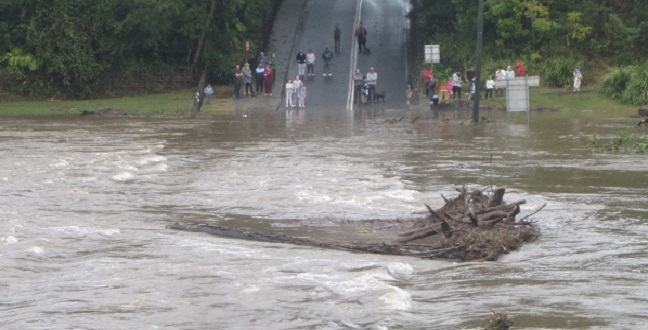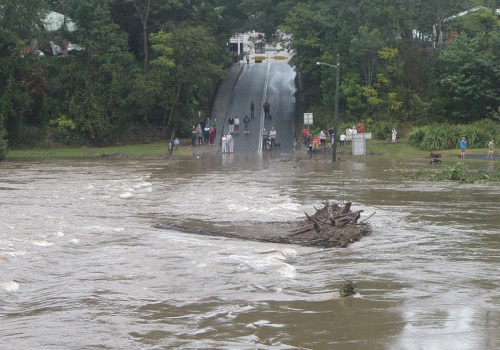Statistics
Getting a handle on extremes
A statistical model that accurately describes rainfall at both extremes opens the way for more reliable predictions of flood and drought risk.


Better statistical modelling of extreme rainfall events could lead to more accurate predictions of flood frequency and scale.
© 2016 Anne Leitch
By tapping into the power of extreme value theory, an international team of researchers including Raphaël Huser from the University’s Computer, Electrical and Mathematical Science and Engineering Division has developed a statistical model that overcomes the shortcomings of previous schemes to provide a reliable basis for climate research and the prediction of drought and flood. The model can accurately describe observed rainfall data and reliably predict the likelihood of future extreme events1.
The analysis of hourly or daily rainfall data presents many challenges for researchers and hydrologists due to the distribution of the data. There are many values in the average range and only exceedingly rare data associated with extreme events like 1-in-a-100 year storms. A lack of tools to accurately describe and extrapolate extreme events from available observations severely limits hydrologists’ capacity to reliably predict the frequency of flood events and expected flood levels.
“As extreme data are scarce by definition, it is very difficult to estimate extreme weather conditions and their frequency, especially beyond the maximum event in the observation period. Our model can be used, for example, to estimate the extent of a 100-year flood at a given location based on just 20 years of recorded data,” explained Huser. “The estimation of periods of extremely low rainfall is equally challenging using limited data.”
The analysis of rainfall extremes is usually performed by applying a different statistical model to that used for the average rainfall range. Both high- and low-intensity rainfall events need to be treated separately in this way, since these rare events obey the rules of extreme value theory—an elegant mathematical framework dictating the occurrence of rare random events in time series data.
This approach, however, results in physically unrealistic aberrations at the rainfall thresholds separating the ranges, and attempts to characterize long-term rainfall features using “sliced and diced” data sets that may no longer be representative of natural conditions.
The approach taken by Huser’s team uses the entire data set without thresholds by applying extreme value theory to both high-intensity and rare low-intensity rainfall events and smoothly linking the tails of the distributions together.
“Our method, which has few parameters and is simple to use, avoids using complicated mixture models that are difficult to fit and apply in practice,” noted Huser. “Extreme events are handled properly by extreme value theory, without which the results could be biased in terms of estimating exceptionally high rainfall intensities.”
References
-
Naveau, P., Huser, R., Ribereau, P. & Hannart, A. Modeling jointly low, moderate and heavy rainfall intensities without a threshold selection. Water Resources Research 52, 2753–2769 (2016).| article
You might also like

Statistics
Checking your assumptions

Statistics
Internet searches offer early warnings of disease outbreaks

Statistics
Joining the dots for better health surveillance

Statistics
Easing the generation and storage of climate data

Statistics
A high-resolution boost for global climate modeling

Applied Mathematics and Computational Sciences
Finer forecasting to improve public health planning

Bioengineering
Shuffling the deck for privacy

Bioengineering



